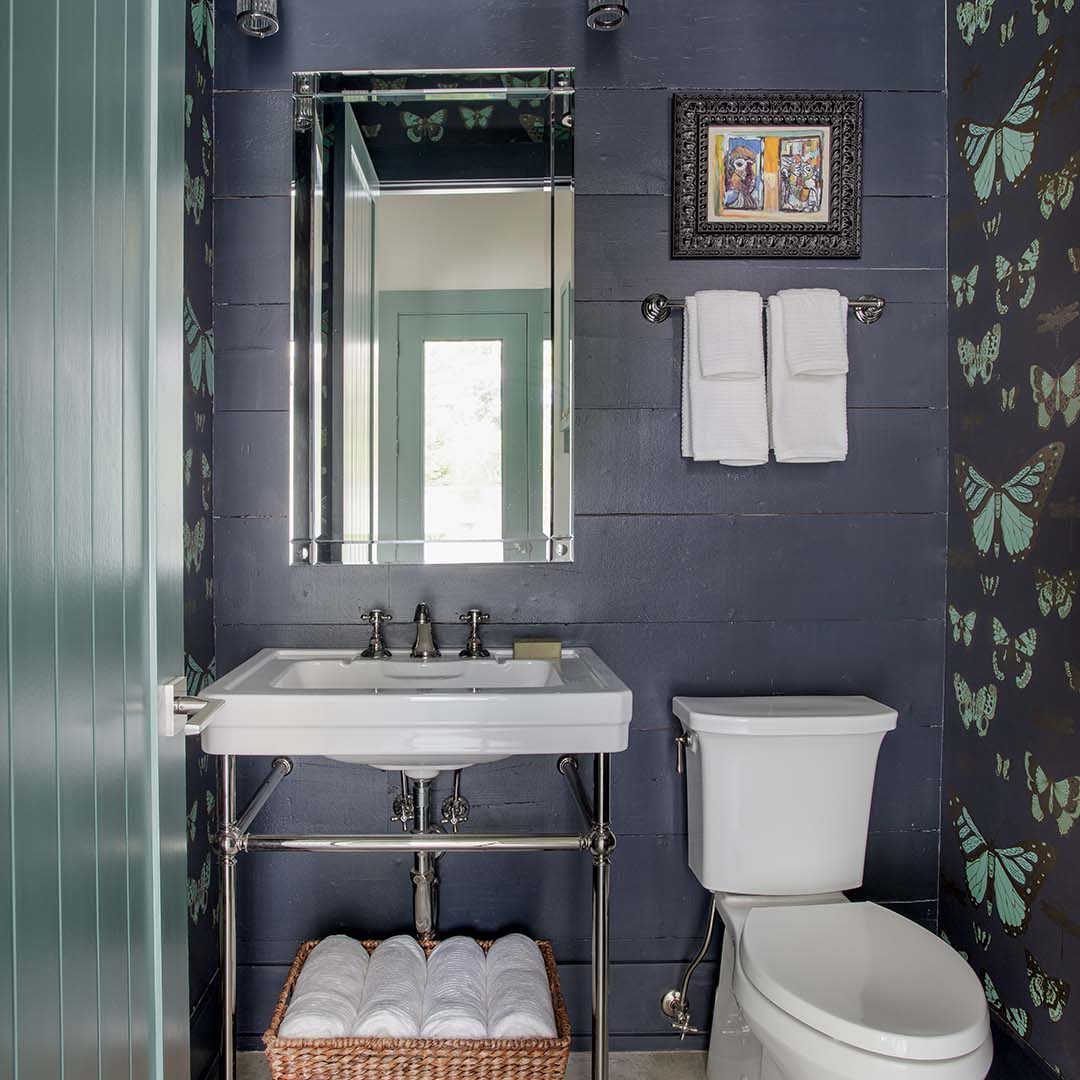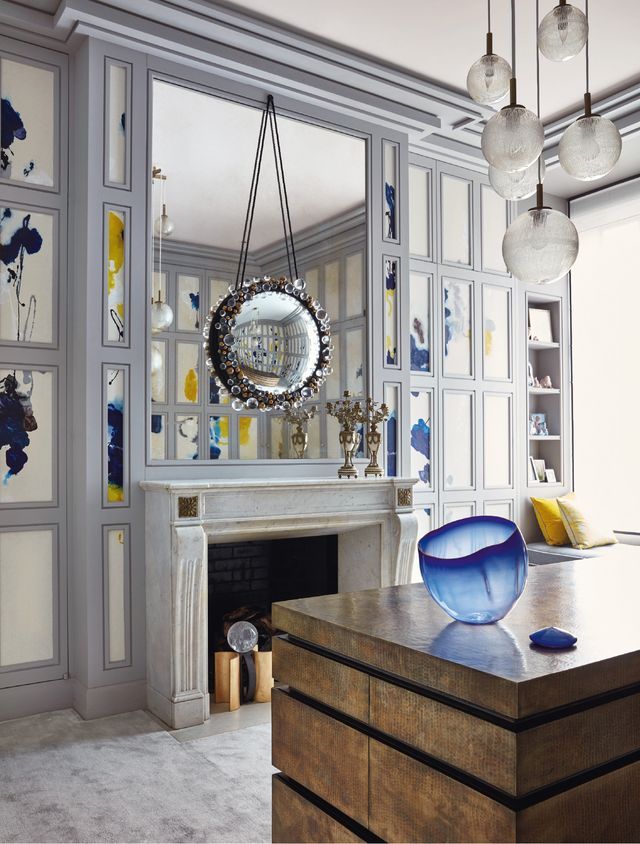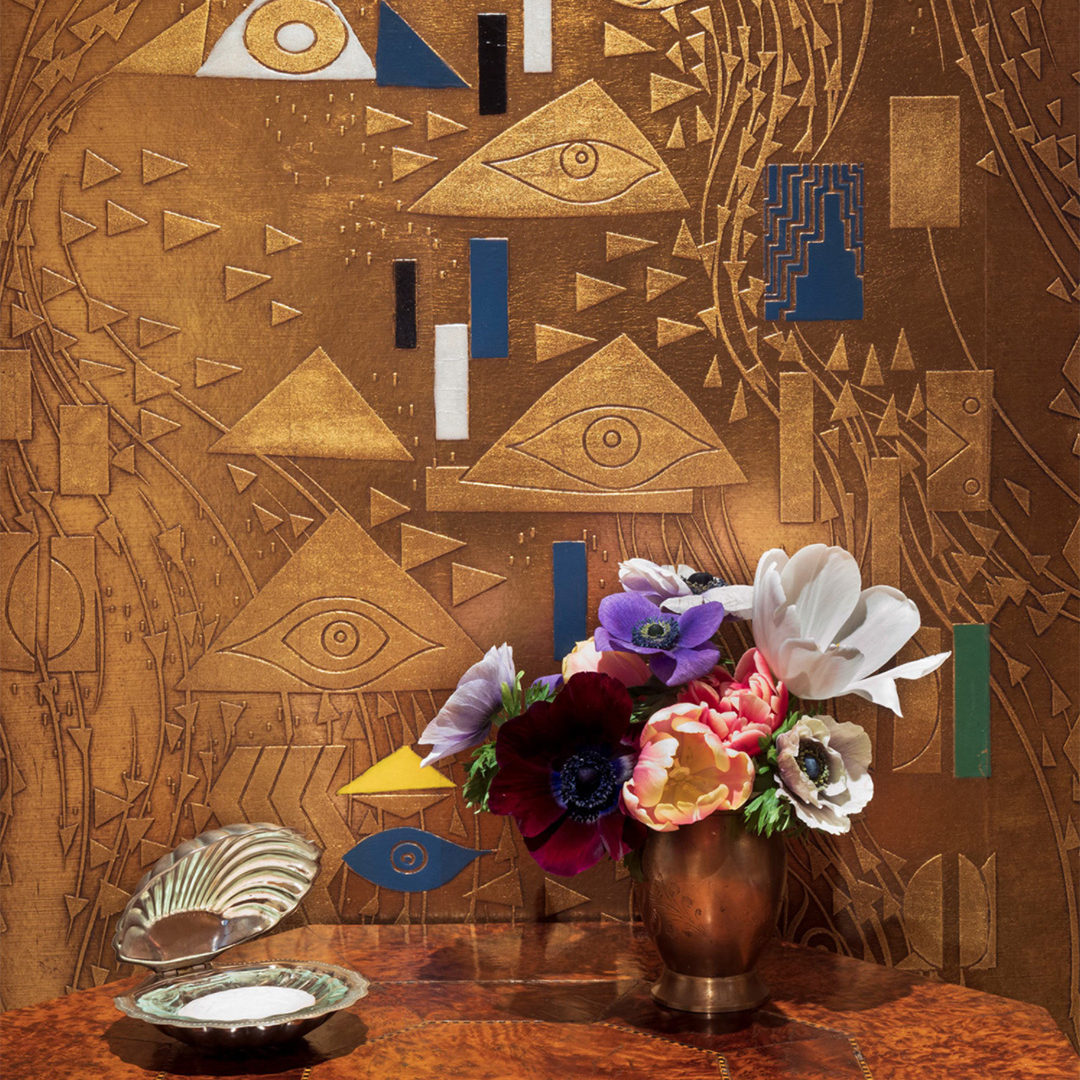We all know it–wallcoverings have been having a major moment. And I’m happy to predict that it will be in style for the foreseeable future.
Wallcoverings positively transform a space.
I once did a tone on tone red stripe for a client’s narrow little powder room. We hung it horizontally rather than up and down, so it created depth and glamour and felt like a fresh take on a classic. To this day, that is one of my favorite installations.
I love designing with wallcoverings, so read on for more of my inspiration…
1. Paper first, everything else second
If you choose the largest elements in your room first, the rest of the design will flow from there. That is true of your rugs, and it is also true of the wallcovering. When I did this dining room for a showhouse a few years ago, I was searching for a way to make a plain white box special. I found this stunning mural from Area Environments, and I knew it had to go on the ceiling.
These murals are custom sized to fit your space, so we sent drawings and dimensions to the manufacturer to achieve the perfect scale. This customization makes them look great in big or small spaces. After that decision was made I selected a subtle but beautifully textured grasscloth from Phillip Jeffries for the walls to soften and ground the room. The rest of the design fell into place once I knew what the big impact items would look like.
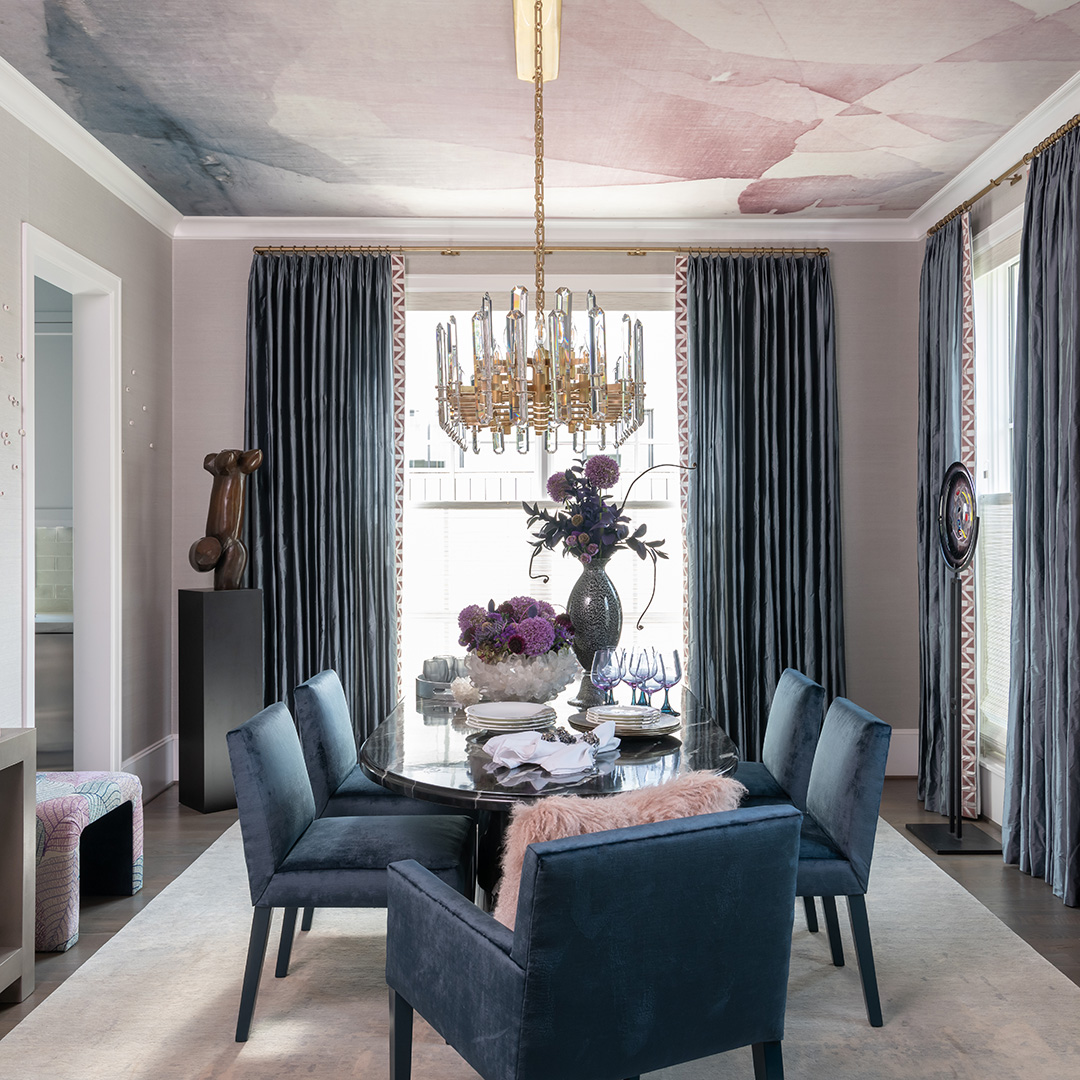
2. And now for something a little different…
Just so you know, designers call it “wallcovering”, not “wallpaper”. We use that term to refer to all of the different types of materials that can be used on your walls–vinyl, fabric, leather, and yes, paper. But really, including the word “wall” is very limiting. You can add a frame to a beautiful piece of wallcovering and hang it as art. You can use it in a cabinet behind shelving, or you can apply it to cabinet fronts.
This dressing room by designer Jean Louis Deniot is a favorite inspiration of mine–he used a custom Porter Teleo paper on just the flat panels of the cabinetry. This is my dream closet!
3. Ceilings need love, too
Let’s talk a little more about not using wallcovering on the walls. Papering the ceiling (often referred to as the 5th wall) is a terrific way to add excitement to a room. People walk into a space, and it takes them a few seconds before they look up…but when they do, wow–you can see their eyes light up! It is just a little unexpected and kind of joyful to have a fun pattern on the ceiling.
Pro tip: plan ahead for painting vents, can light trim, or anything else that lives up there in a color to match the background of your paper.
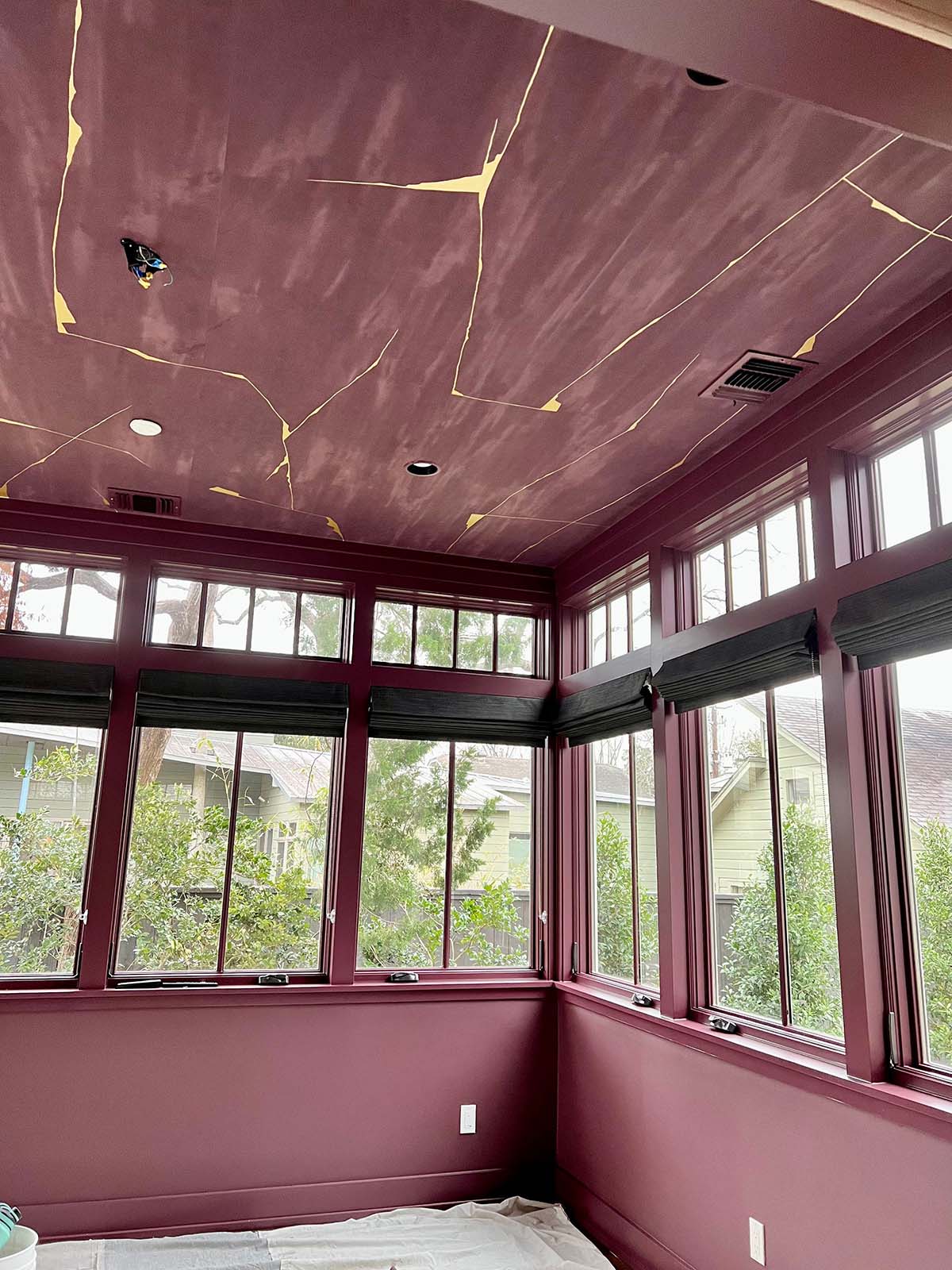
4. Texture
One of the really interesting things happening in wallpaper now is texture. Saying that brings back memories of the flocked velvet paper in the entry hall at my high school boyfriend’s house–but I promise, we’ve come a long way.
There are wallcoverings made of foil, natural grasses, plaster, and even some with sand or microscopic bits of glass. You might also consider leather or wood veneer applications, either real or faux, they are rich and yummy.
I am considering this textured, gold beauty from de Gournay for the entry hall of my new house. It is a bas relief (meaning that some of the decoration stands forward from the background).
Let me know in the comments below if you think I should go for it!
5. Just do it
You don’t need to wallpaper every room in your home. Try starting with the powder room, and go from there. If you are afraid of commitment, try one of the peel off types on the market now.
The New York Times wrote a great article about the best brands, and you can read it here.
Keep in mind that busier patterns will hide imperfections in your wall surface, and smaller patterns will make a room look larger. And remember, these are walls we are talking about, so don’t be afraid to hang art right on top of your paper. It’s meant to be fun, right?
